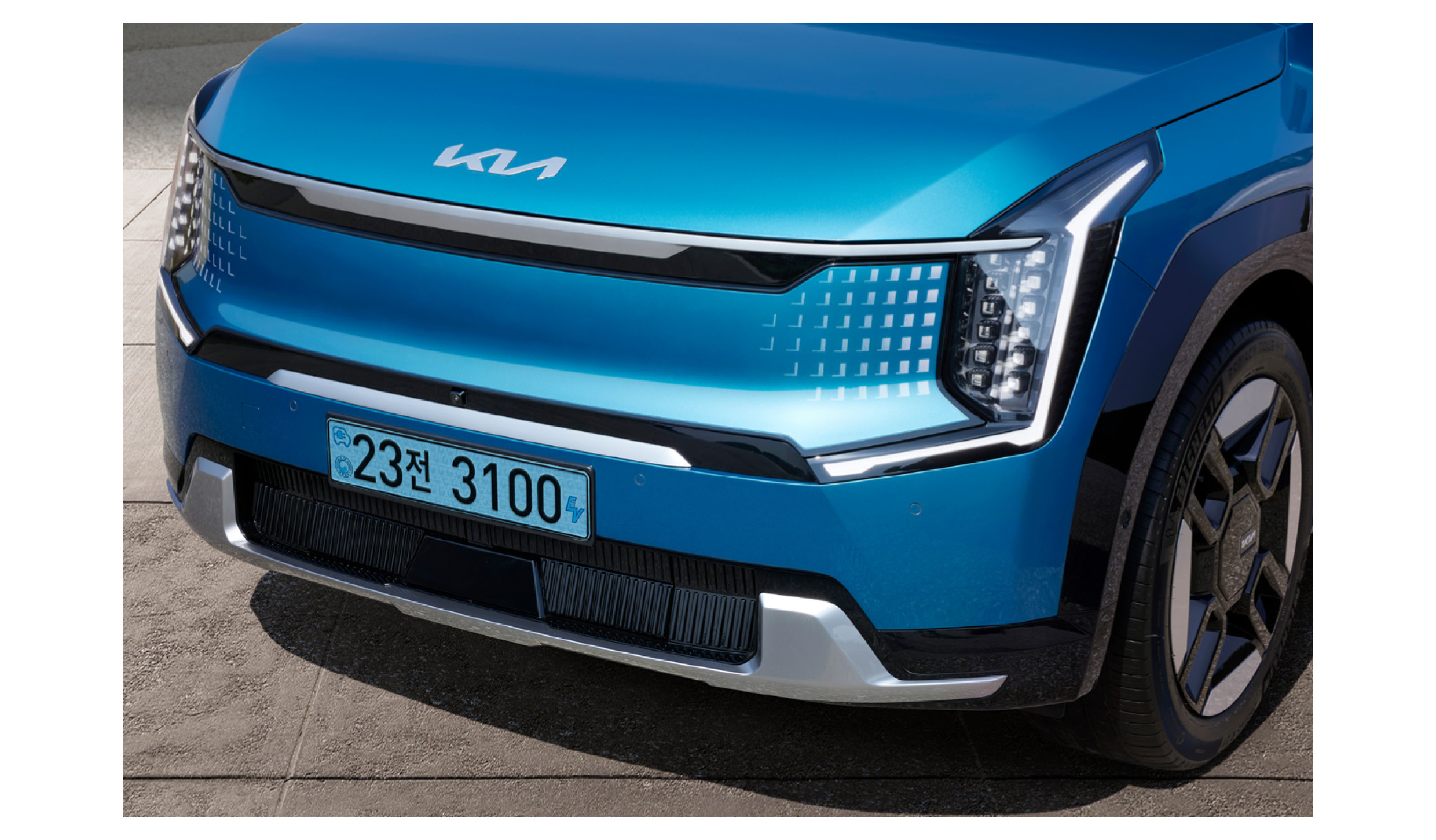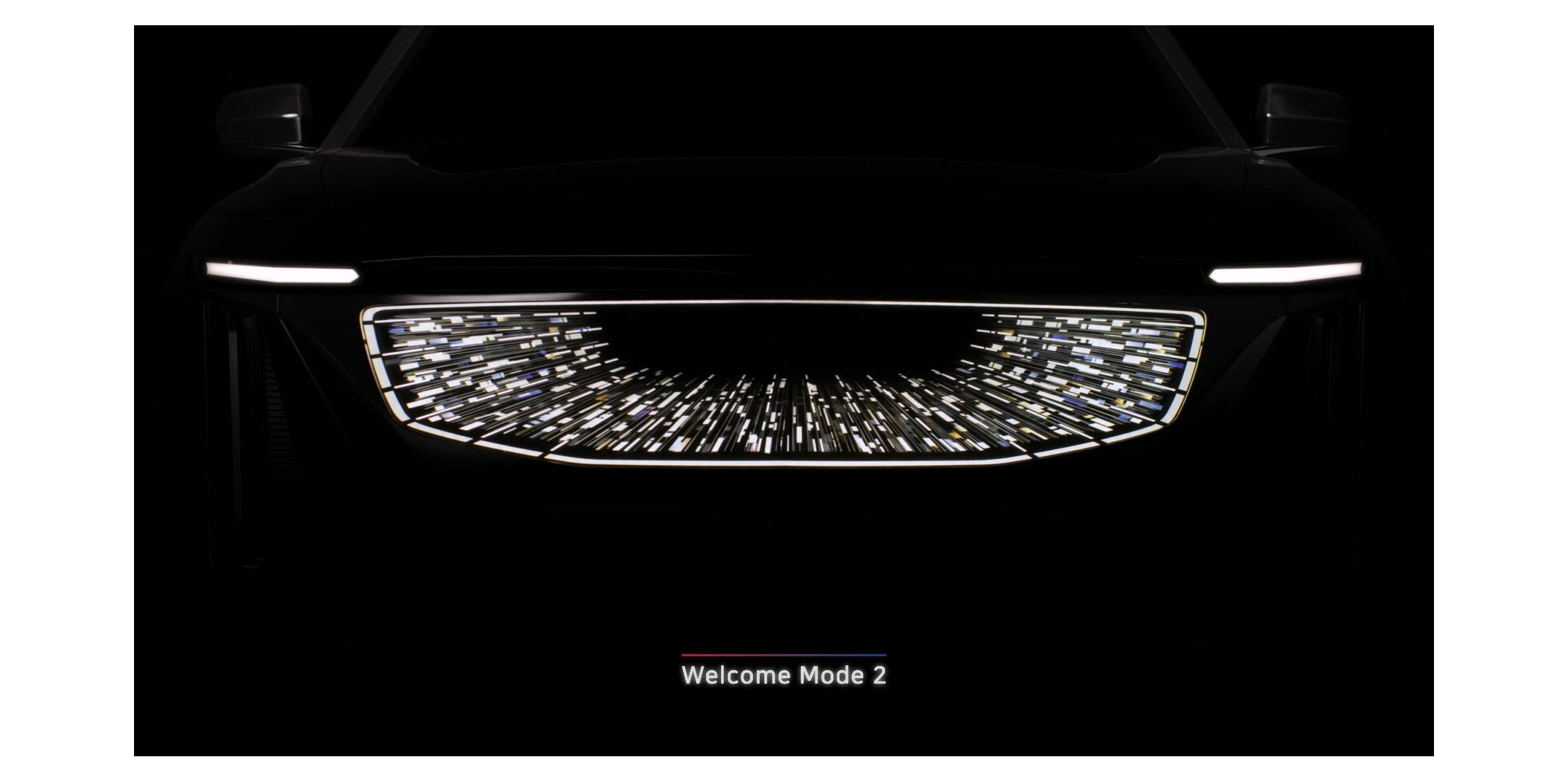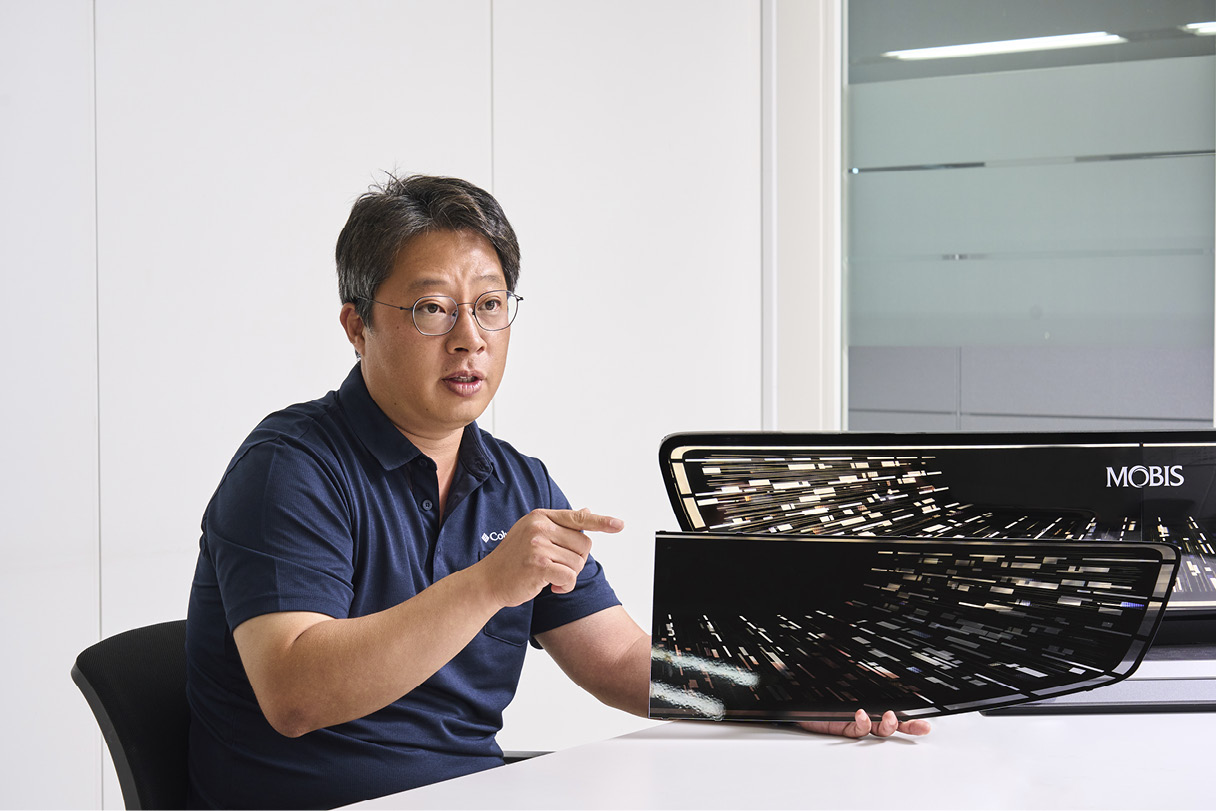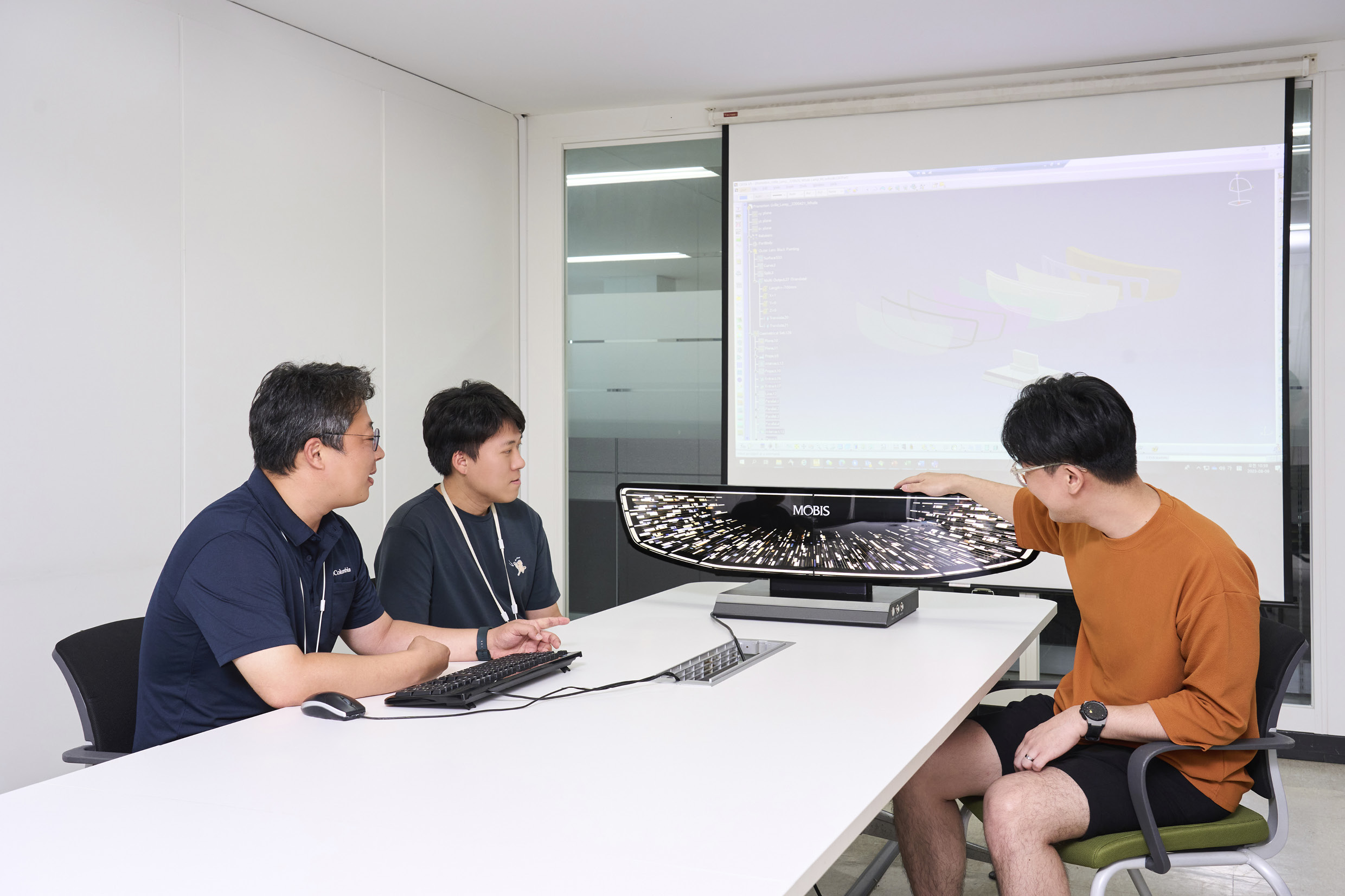




The face of automobiles is changing with the rise of EVs; Automakers continue to refine the appearance of the Front End Module, including bumpers, headlamps, and radiator grilles, to reduce air resistance and increase fuel efficiency; And of all of them, the grille may have changed the most. In the era of internal combustion engines, the grille was meant to cool the engine. It was also widely used as a design element symbolizing the car’s identity. However, EVs house an electric motor instead of an engine, making cooling less important. Therefore, its grille is flat, with no intake openings to reduce air resistance.

As the core design elements of cars change significantly, these design changes to increase efficiency may seem a little unfamiliar to a generation accustomed to internal combustion engine vehicles. Therefore, automakers are making repeated attempts to maintain design identity while adding new sensibilities. There are many ways to do this, such as enlarging the grille, adding LED pattern lights, or removing the border between the headlamps and grille.

Hyundai Mobis developed Lenticular Grille Lighting technology in consideration of these trends in grille design; And this is a new attempt to add emotion to the car at the same time. The biggest feature is that it uses lenticular lenses and LED lights to create a sense of depth using the parallax between the two eyes, creating a completely different sensation from the existing EVs grille. It adds three-dimensionality to the flat grille. Additionally, patterns and LED lights can add a variety of visual effects. Here, the researchers who developed Hyundai Mobis’ lenticular grille lighting technology explained it in detail.

The design used in the lenticular grille lighting technique is ‘stardust’ – meaning a large number of distant stars appearing to the observer as a cloud of dust. As its name indicates, we got the idea from space, to be exact, we were inspired by scenes of light traveling in space, which are often seen in science fiction movies. Jun-hyuk Cha, a researcher at the Mobility Product Design Cell who was in charge of the design of the lenticular grille lighting technology, explains this as follows:

“The existing grille lighting technology used LEDs to add patterns to the flat surface. But the lenticular grille lighting technique expressed three-dimensional space. Therefore, we thought about how to most clearly show the sense of three-dimensionality and motion. To maximize the sense of space, it would be advantageous to have a shape that converges from the edge to the center. I was inspired by the time warp scenes often seen in science fiction movies”.

“Usually, in time warp scenes in movies, the afterimage effect of stars is added to give the feeling of movement. We took inspiration from this and drew a pattern of numerous lines extending from the center to the edges. And the thickness and clarity of the lines were varied to express the distance between stars. Thanks to this, the patterns give a different sense of three-dimensionality and motion. The focus is on maximizing the differentiation of lenticular grille lighting technology”.

The detailed optical technology supports a design that takes inspiration from space and adds depth. The core technology of lenticular lenses is to create a three-dimensional effect by creating an eye parallax using an optical system. The lenticular lens used in lenticular grille lighting technology is only 2.2 mm thick. However, thanks to the multifocal ultra-small optical system that realizes the depth perceived by the eye and the difference in focus distance, it creates a three-dimensional effect close to 40-45mm.

This is a huge advance over existing lenticular lens technology. The lenticular lens applied to the tail lamp of the Hyundai Venue in 2019 was 1.4mm thick and created a three-dimensional effect of 25 to 28mm. However, the internal composition of the lenticular lens applied to the lenticular grille lighting technology has been changed, increasing the three-dimensional effect by 1.6 times and the sense of motion by nearly 2.5 times. The automaker even added a hidden image layer to create a shadow effect. Seok-hyun Kim, a senior researcher at the Lamp Advanced Mass Production Technology Cell, who was in charge of the optical development of the lenticular grille lighting technology, explains the characteristics of the lenticular lens as follows:

“The 3D effect of lenticular lenses goes beyond the limitations of product size. To create a sense of depth in a conventional way, the thickness of the product must be increased. However, by using lenticular lenses and multi-layer images, it is possible to create a sense of depth even in a thin space. “This conveys a surreal feeling to the viewer and can serve as a differentiating design advantage.”
Hyundai Mobis’ lenticular grille lighting technology uses 580 light sources to maximize design effects. This makes it possible to implement various 3D patterns. Of course, various optical systems can be applied to suit the customer’s requirements; This is the biggest difference from the grille of existing cars. The grille of an internal combustion engine is three-dimensional, but cannot produce motion. On the other hand, EVs’ LED grille can produce motion, but does not have a three-dimensional effect. The lenticular grille lighting technology of Hyundai Mobis is capable of producing both three-dimensional effect and motion production.

“Complex production is possible by implementing patterns with 3D effects on a flat surface through lenticular lenses. In some cases, only one thing can be achieved - three-dimensional effect or motion. Since there are such a variety of methods, if applied to EVs, it will be possible to create a design that is differentiated from existing ones while matching the design concept of each brand. And through individual control of the light source, it can also be used to communicate with the outside world, such as pedestrians,” explains senior researcher Seok-hyun Kim.

The lenticular grille lighting technology boasts a highly structured design. The parts used in the exterior of a car, such as the grille, must be highly durable because they are exposed to the external environment. In particular, excellent airtightness is required to protect sensitive components such as lenses and LEDs. Of course, as it encompasses materials with different characteristics, even small errors cannot be tolerated. Young-su Lee, a researcher at the Global Lamp Order Response Cell who was in charge of designing the lenticular grille lighting technology, explains:

“The lenticular grille lighting technology consists of six parts: outer lens, lenticular lens, inner lens, reflector & LED module, back cover, and housing. The outer lens protects the inside from external foreign substances and impacts. Lenticular lenses use binocular parallax to create a three-dimensional effect and a sense of motion. The inner lens disperses light to create a uniform image. Reflector & LED modules are used to concentrate and secure the amount of light. The back cover and housing facilitate assembly while protecting internal components from impact. And since reducing its weight will help secure combat efficiency, reducing the weight was as important as durability when designing the lenticular grille lighting.”

“Also, it was designed considering a variety of vehicle types in mind. Lenticular grille lighting technology maintains the sleek appearance of EVs as much as possible while minimizing aerodynamic loss. And because it creates motion design and three-dimensional pattern effects, a unique new design is possible while taking advantage of the characteristics of EVs.”

Hyundai Mobis’ ‘lenticular grille lighting technology’ is a result of improving and converging existing technologies. However, the road to completion was not easy and involved many trials and errors. For example, in a lenticular lens, matching focus and image is important, but in a lenticular lens composed of multiple layers, the characteristics of each layer are different, resulting in a refraction effect for each material, making it difficult to adjust.

In addition, it was difficult to implement complex curvature because the stretching characteristics of each material were different and separation between layers was easy to occur. Therefore, each department was able to complete this after repeated detailed analysis and coordination, such as analysis of construction methods. Thanks to this, Hyundai Mobis’ lenticular grille lighting technology is easy to expand. Not only can it be applied to a variety of cars, but by enlarging it, it can be applied to various sectors other than the grille.
These are times of upheaval in the automobile industry. Everything is changing in the era of EVs; We need to take a fresh look at things we have become accustomed to and at the same time find ways to improve them. Still, it is delightful news that various automakers are continuing to make various attempts to add special emotions to their cars. Using the lenticular grille lighting technology, many are hoping that Hyundai Mobis will open an era of more emotional and special EVs.
Photography by Hyuk-soo Cho